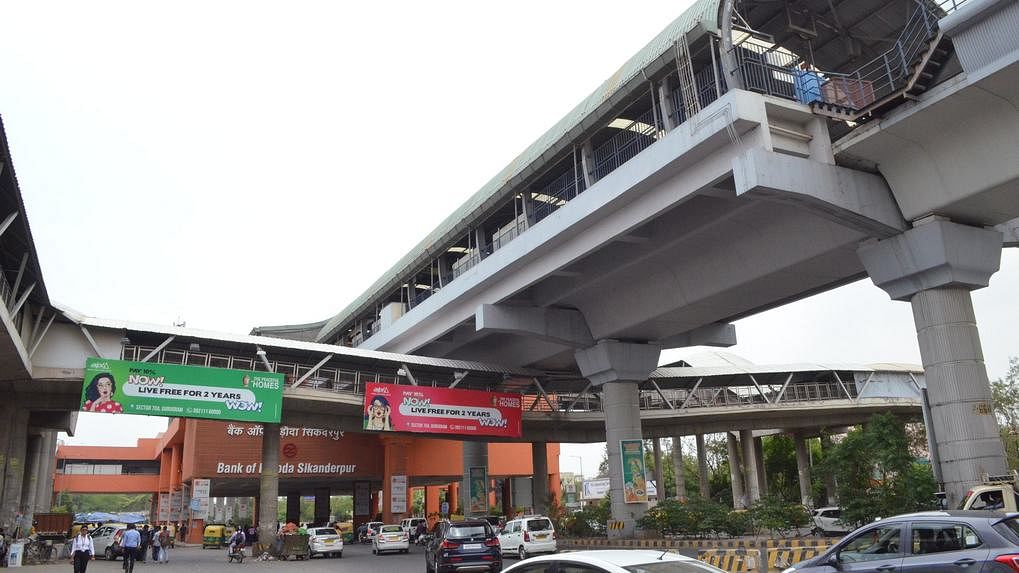New Delhi: The Delhi Metro, with a network of 377 km, is inarguably one of India’s most efficient suburban rail systems, connecting areas on different ends of the national capital region (NCR).
It’s also an asset to Delhi’s environment, offsetting carbon emissions to the tune of 36.2 lakh tonnes over the past 10 years.
Amid the ongoing Aarey Dairy Colony controversy, which brought Mumbaikars out in droves to protest against the felling of around 2,700 trees for a Mumbai Metro project, the Delhi Metro claims to have pulled off the project with careful planning that addresses multiple concerns associated with deforestation as well as other environment-related aspects.
Also Read: Bombay HC allows Aarey felling: Was the urban tree activism based on hype and fear?
Deforestation, reforestation
Each time a tree is felled for the suburban railway network, the Metro authorities have to pay compensation to the Delhi Forest Department, which then carries out compensatory afforestation.
A total of 10 saplings are planted for every tree cut, said a senior official of the Delhi Metro Rail Corporation (DMRC), a joint venture of the union territory administration and the central government.
According to DMRC data accessed by ThePrint, the Metro concessionaire planted over 5 lakh saplings to compensate for the 43,727 trees cut for the three phases of the network — that is 11 times.
These 43,727 trees were felled against an allowance for 56,307, but the DMRC amended its plans to avoid cutting 12,580 trees, officials said.
The trees planted, according to DMRC data, have sucked up 1.02 lakh tonnes of CO2 over the past 10 years and given out 1.07 lakh tonnes of oxygen.
Another 35 lakh tonnes of carbon emissions were offset through the use of clean alternatives like solar power and reducing commuters’ reliance on fossil fuels, the DMRC data stated.
Officials of the DMRC environment section said they made a conscious effort to minimise environmental damage as they pushed forth with the Metro project.
For example, a depot at Khyber Pass, which caters to Yellow Line (between HUDA City Centre and Samaypur Badli), was built at a landfill site to avoid tree-felling. This required the DMRC to remove all the garbage from the site, and laying it with good earth for the tracks to be laid.
However, such measures could only be taken in areas where alignment was even minutely possible, DMRC spokesperson Anuj Dyal added. Areas where alignment was not possible, trees had to be felled, he said.
‘Green buildings’
A DMRC official said all the stations being built under the ongoing Phase III have been designed as “green buildings” with specific provisions for conservation of energy and water, fewer emissions, and waste management.
They have been equipped with more plants, water-efficient fixtures and low-VOC paints, that is, paint with fewer volatile organic compounds that are harmful to human health and the environment.
Furthermore, Dyal said, when certain areas needed to be “dewatered” for the construction of underground Metro lines, the water was shared with the Chandrawal Water Works for the revival of lakes in North Delhi. “Similarly, we recharged groundwater in the area again in the next phase,” he added.
However, experts are split on the initiatives taken by the DMRC to mitigate damage.
Environmentalist Chandra Bhushan, the former deputy director general at the Centre for Science and Environment, said the steps taken by the concessionaire were a case of short-term pain that lead to long-term gain.
“If Metro is helping reduce the number of cars on the roads, it is anyway helping address growing vehicular pollution,” he added. “So my views are slightly different from most environmental experts… I feel if some trees have to be done away with for this, it is worth it in the larger sense perhaps.”
A senior fellow at the Delhi-based TERI School of Advanced Studies, who has been engaged with the Indian Railway Board, differed.
“I am not sure we can say the environmental policies were being implemented, given that a huge number of trees had been done away with by the DMRC… Similar claims made about tree planting at Barakhamba Road, for example, don’t seem to have seen the light of day,” the fellow added. “So, I am not sure if those planted as compensation actually end up even making up for the loss.”
Also Read: People behind #SaveAarey & how they’ve become a ‘big nuisance’ for Mumbai’s metro dreams
